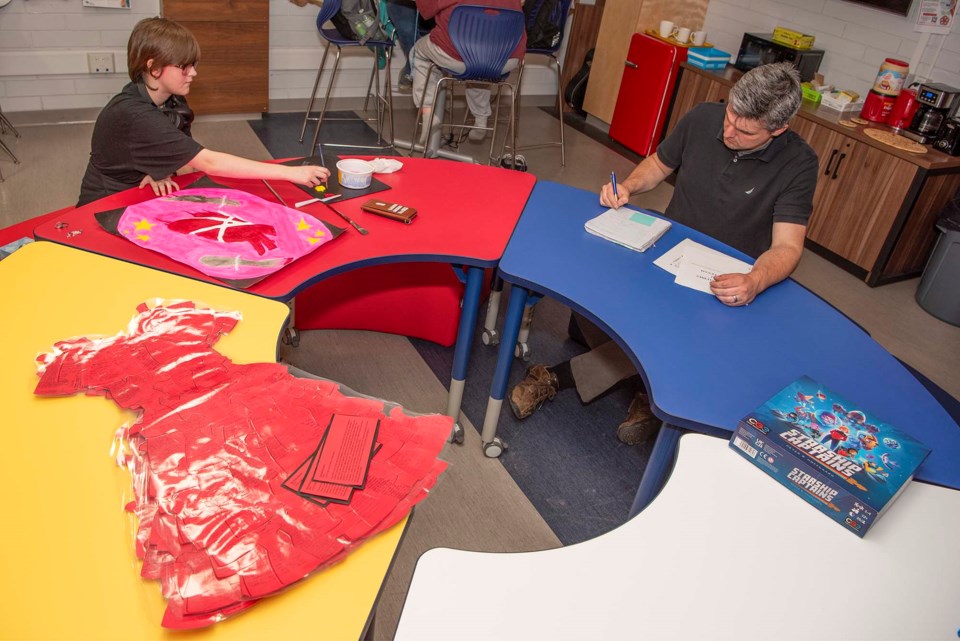Autumn Locken is working on her magnum opus: a painting of a heart being eaten with a knife and fork. She’s doing so at a round table painted with the colours of the medicine wheel in a room draped with Métis sashes, symbolic red dresses, and posters celebrating her Indigenous heritage.
Locken, a Grade 12 student and a member of the Cote First Nation, is working in the apîw kamîk Student Success Room at Sturgeon Composite. She drops by on most days to take part in smudge ceremonies, talk with First Nations, Métis, and Inuit student success counsellor John Vallier, and work on assignments in peace.
“It’s a space where I can just be myself,” she said.
Locken is one of the dozens of students in the St. Albert and Sturgeon County area who benefits from Indigenous learning spaces at schools. A relatively recent trend, these spaces aim to promote First Nations, Métis, and Inuit culture and history and help Indigenous students succeed in school.
A room for living
Canada’s residential school system created a significant achievement gap between Indigenous and non-Indigenous students, resulting in chronic poverty, family violence, and other ills, the Truth and Reconciliation Commission found. Canadian educators have for decades sought ways to close this gap and help more Indigenous students succeed at school.
Researchers have found that students succeed when they feel safe and accepted at school, said Shannon Requa, director of education planning with Sturgeon Public. Dedicated Indigenous learning spaces show students that Indigenous culture is valued and celebrated and give them a chance to learn more about it.
About eight schools in Sturgeon Public now have such dedicated spaces, such as the Thelma Chalifoux Healing Garden at Four Winds Public, the healing garden at Redwater School, and the one at Sturgeon Composite.
Sturgeon Composite set up the apîw kamîk three years ago, Vallier said. Former student Jayme Arcand came up with the room’s name (Cree for “living room”) as a joke last year to reflect its relaxed mood.
“It was our vision to build a highly Indigenous student space,” Vallier said, one where students could perform ceremonies, bolster their mental health, and improve their academics.
“We want Indigenous students to feel like they have a home base.”
Vallier is based out of the apîw kamîk and provides Indigenous students with academic, mental health, and career counselling on a drop-in basis. The room hosts ceremonial smudges every morning and serves as the meeting room for the school’s Student Chief and Council.
Requa said it was hard to say if these spaces had improved student performance, especially given learning disruptions caused by the COVID-19 pandemic. The spaces see frequent use, with teachers and families saying they help students connect with school and plan out their careers.
Last fall, Sturgeon Composite added a second Indigenous space to its grounds in the form of a large teepee by the front door. Vallier said students and teachers have used it to hold talks on treaty rights and other ceremonies. Elders from Alexander First Nation will host cultural “teepee talks” in it during the school’s June 21 National Indigenous Peoples Day celebration.
Locken said seeing the teepee in front of the school has given her new appreciation for her roots.
“I never really thought about my background until I came here [from Gibbons] because I never saw it around,” she said.
The teepee was the traditional site for the training and education of children in the community before colonization, and symbolically wraps around and protects those within it, Vallier said.
“There’s no more apt symbol for the mission of public schools than the teepee.”




